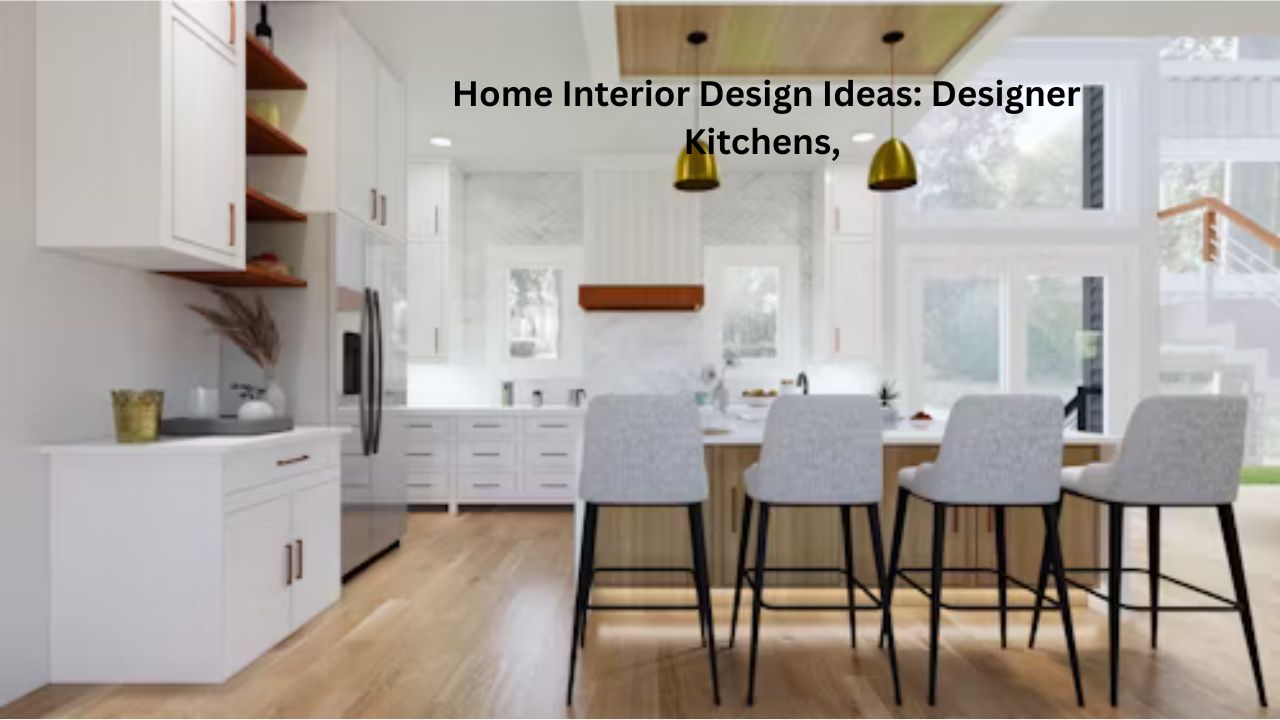Interior design can feel overwhelming when you don’t know where to begin — but the truth is, every beautiful room starts with style clarity. Understanding different interior design styles not only saves time and money but also helps you decorate with confidence. Below are the most popular interior design styles, inspired by real examples from House Beautiful “Types of Interior Design Styles.”
1. Modern Style
Modern design is all about clean lines, smooth surfaces, open spaces, and simplicity. If you love clutter-free rooms, sleek furniture, and neutral colors like white, gray, or black, modern style can feel refreshing and calming.
Key features of modern design:
- Minimal décor
- Functional furniture
- Neutral color palette
- Natural materials like wood, leather, and metal
- Open layouts
You’ll often see modern kitchens with flat-front cabinets, stone countertops, and beautiful pendant lights. The simplicity makes the room feel larger and more relaxing.
2. Contemporary Design
Many people think modern and contemporary are the same, but they’re not. Contemporary style is constantly evolving; it reflects what’s trending right now. Today’s contemporary look includes curved furniture, warm neutrals, soft textures, and natural light.
If you want a home that feels new, stylish, and dynamic, contemporary design is a perfect match.
3. Traditional Interior Design
Inspired by classic European décor, traditional style uses elegant furniture, detailed woodwork, warm color palettes, and rich fabrics. It feels timeless, sophisticated, and full of character.
Common elements include:
- Crown molding
- Antique-style furniture
- Chandeliers
- Deep colors like red, navy, and gold
- Patterned rugs
Traditional homes feel cozy, dignified, and balanced — great for people who love heritage and classic beauty.
4. Transitional Style
If modern feels too minimal but traditional feels too old-fashioned, transitional design is your perfect middle ground. This style blends modern and traditional elements to create a timeless, harmonious aesthetic.
Imagine soft neutral colors, comfy sofas, elegant lighting, and furniture with simple shapes. It’s clean yet warm, stylish yet comfortable.
5. Farmhouse Style
Thanks to social media, shows, and top designers, farmhouse décor has become incredibly popular. It mixes rustic charm with comfortable, modern living.
Key elements of farmhouse design:
- Shiplap walls
- Exposed beams
- Neutral earthy tones
- Vintage furniture
- Open shelving
- Natural wood finishes
From modern farmhouse kitchens to cozy bedrooms, this style feels warm, inviting, and full of character.
6. Industrial Style
Industrial design brings the vibe of warehouses and lofts into your home. Think exposed brick, metal hardware, concrete floors, and reclaimed wood.
This look is perfect for apartments, studios, and modern homes seeking bold character.
Industrial design essentials:
- Metal lighting fixtures
- Brick or concrete walls
- Leather décor
- Open, airy layouts
7. Bohemian Style
Boho style is colorful, relaxed, expressive, and artistic. If you love layered textures, bold patterns, plants, and global-inspired décor, this style brings life and personality into any room.
Boho elements:
- Macramé
- Mixed fabrics
- Rich jewel tones
- Woven baskets
- Indoor plants
- Patterned rugs
Boho rooms feel warm, creative, and full of soul.
8. Minimalist Interior Design
Minimalism focuses on simplicity and intentionality. If you crave calmness and want fewer things, this is the style to choose.
Features include:
- Clean surfaces
- Neutral colors
- Hidden storage
- Only essential décor
- Strong focus on light and space
Minimalist homes often look peaceful, airy, and thoughtfully designed.
9. Coastal Interior Design
Inspired by the beach, coastal décor uses breezy fabrics, cool tones, natural textures, and relaxed furniture.
Color palette:
- Soft blues
- Whites
- Sandy beige
- Seafoam green
Coastal kitchens and living rooms feel airy, inviting, and perfect for people who love oceanside comfort.
Quick & Easy Home Decorating Ideas Anyone Can Do
Based on HouseBeautiful’s “Quick and Easy Home Decorating Ideas,” here are practical, budget-friendly suggestions that instantly refresh your home — no renovation required.
1. Add a Pop of Color
You don’t need to paint the entire room. Even a single colorful piece — like a throw pillow, art print, or vase — can transform your space. Designers often call this a “color moment” — a small touch that makes a big impact.
2. Rearrange Your Furniture
One of the easiest design tricks: move your furniture around. Change the orientation of your sofa or bed, open up pathways, or create conversation zones.
This costs nothing and makes your home feel instantly new.
3. Use Mirrors to Make Rooms Look Bigger
Mirrors reflect light, make rooms appear larger, and add elegance. Place a large mirror behind a lamp or across a window to brighten dark areas.
4. Layer Rugs for Texture
Layering rugs adds warmth, color, and style to your floor. Try placing a patterned rug on top of a larger neutral one for a designer look.
5. Swap Out Hardware
Changing your cabinet knobs, drawer pulls, or door handles is an inexpensive upgrade that gives your home a polished finish.
6. Display Fresh Flowers or Greenery
Plants bring life, color, and freshness to any room. Whether real or faux, greenery instantly boosts mood and visual appeal.
7. Create a Gallery Wall
A gallery wall is a stylish way to showcase your personality. Mix art, family photos, prints, and objects for a curated, designer-approved look.
8. Use Lighting Layers
Lighting is one of the most powerful elements in interior design. Add table lamps, floor lamps, sconces, or LED strips to create warmth and ambiance.
9. Add Throw Blankets & Pillows
Soft textiles make your living room or bedroom feel inviting. Combine textures — velvet, cotton, wool, linen — to create depth and luxury.
10. Style Your Bookshelves
Designers recommend mixing books with decorative objects, small plants, candles, and framed photos. This creates a visually pleasing, balanced display.
Colorful Bedroom Decorating Ideas
Inspired by HouseBeautiful’s “Colorful Bedroom Decorating Ideas,” this section explores how to create a vibrant, lively, and personalized bedroom using colors in a smart way.
1. Choose a Color Palette
Start with 2–3 main colors and 2 secondary tones. This prevents visual chaos and helps your room look coordinated.
Popular color combinations include:
- Blue + White + Tan
- Pink + Gold + Cream
- Green + Wood tones
- Mustard Yellow + Charcoal
2. Add Color Through Bedding
Your bedding is your bedroom’s biggest visual focus. Using colorful duvets, sheets, or pillowcases instantly boosts style.
3. Use Statement Walls
A bold wall color — like navy, emerald, terracotta, or coral — creates a dramatic, designer-approved look.
For renters: try peel-and-stick wallpaper.
4. Mix Patterns Carefully
Stripes, florals, and geometric designs can work beautifully when mixed properly.
Designer rule:
Balance 1 big pattern + 1 medium pattern + 1 small pattern.
5. Add Colorful Artwork
Artwork brings personality and ties your bedroom palette together. Choose pieces that include your main colors.
6. Use Rugs to Add Warmth
A colorful rug makes your bedroom feel cozy and grounded. You can match your rug with your bedding or create contrast.
7. Display Accent Furniture
Side tables, chairs, or bedside lamps in bold colors add depth and interest without overwhelming the space.
8. Use Natural Light
Color looks best in daylight. Keep your curtains light, airy, and easy to open. If your room is dark, use warm lamps for a cozy feel.
Design a Home That Feels Beautiful, Comfortable & Truly Yours
Your home should be your personal retreat — a place that inspires you, comforts you, and reflects your personality. Whether you love modern, traditional, boho, coastal, or farmhouse style, each design choice brings your home to life.
By using quick decorating tips, understanding your style, experimenting with color, and following proven designer techniques, you can create a home that’s not only beautiful but also functional, welcoming, and truly meaningful.
Beautiful design doesn’t require big budgets — just creativity, intention, and inspiration.



